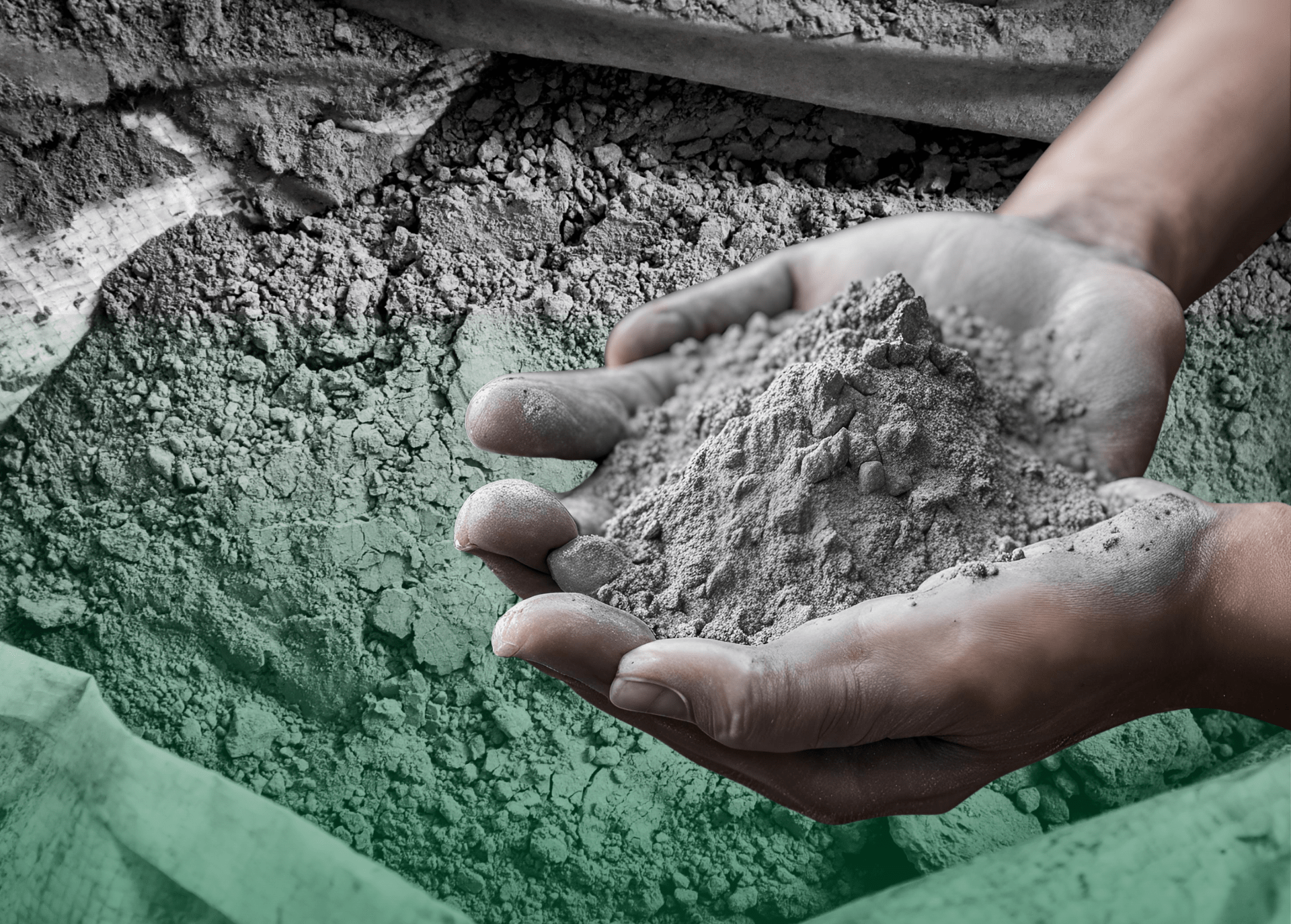Fly Ash
What is Fly Ash? Fly ash is a fine, powdery material produced as a by-product during the combustion of coal in power plants. It has unique pozzolanic properties, making it a valuable and environmentally effective addition to a wide range of industries, especially in the construction sector. With the increasing demand for sustainable materials in today's modern world, fly ash has become a popular choice that enhances performance and improves the characteristics of end products such as concrete, bricks, and mortar. As a leading supplier of fly ash in Saudi Arabia, "Masheed" provides innovative and sustainable solutions based on this highly valuable material. Fly ash consists of spherical glassy particles rich in silica (SiO2), alumina (Al2O3), and iron oxide (Fe2O3), which boost its strength and durability in various applications. Fly ash is not only environmentally friendly but also contributes to improving the quality of materials and reducing costs, making it an ideal choice for any modern construction project that aims for long-term sustainability and strength.
Components and Features of Fly Ash
Fly ash consists of spherical glassy particles rich in three essential elements: Silica (SiO2), Alumina (Al2O3), and Iron Oxide (Fe2O3), which contribute to the pozzolanic properties of fly ash. These properties make it highly effective in various industrial and construction applications, enhancing sustainability in construction projects and reducing reliance on traditional materials like Portland cement.
Fly ash plays a role in achieving the goals of Saudi Vision 2030, as the Kingdom seeks transformation across all sectors, including the construction sector, by using sustainable materials and digital transformation technologies that improve efficiency and reduce environmental impact.
Key Features of Fly Ash
1. Environmentally Sustainable
Fly ash is a sustainable material that helps reduce the carbon footprint of concrete and other building materials. Its use enhances sustainability in projects, aligning with the goals of Saudi Vision 2030 to reduce emissions and promote a green economy.
2. High Pozzolanic Activity
Thanks to its pozzolanic properties, fly ash improves the performance of concrete, increasing its strength and durability. It is widely used in applications that require long-lasting performance. Fly ash can be used alongside microsilica and ground granulated blast furnace slag (GGBFS) to enhance cementitious properties.
3. Cost-Effective
Due to its wide availability and being an economical option, fly ash is widely used in construction projects, reducing overall costs. It can be combined with other cementitious materials to improve performance and efficiency.
4. High Chemical Resistance
Fly ash enhances concrete's resistance to sulfate and chloride attacks, reducing the impact of harsh environmental factors and extending the lifespan of concrete. This feature is particularly important in infrastructure projects requiring high chemical resistance.
5. Reduces Heat of Hydration
The properties of fly ash help reduce the heat of hydration generated during the cement hydration process, preventing thermal cracks that could negatively impact the quality of concrete.
6. Improves Workability
Due to its unique properties, fly ash improves the workability of concrete, making the mixing, pumping, and finishing processes faster and more efficient.
Main Applications of Fly Ash
1. Concrete Production
Fly ash is a common material in concrete production, reducing the need for Portland cement and lowering the environmental impact, making it an ideal choice for large projects aiming for sustainability.
2. Mortar and Cement
When added to mortar and cement, fly ash improves workability and provides long-term performance, enhancing the quality of construction projects.
3. Road Construction
Fly ash is used in road construction for soil stabilization and as a partial replacement for cement in concrete pavements, improving soil stability and increasing load-bearing capacity.
4. Brick and Block Manufacturing
Fly ash is used as an ingredient in brick and block manufacturing, where it enhances their strength and durability while reducing reliance on traditional materials like cement.
5. Soil Stabilization
When used with soil, fly ash can improve the engineering properties of the soil, making it an ideal material for projects requiring high strength and stability.
6. Waste Stabilization
Thanks to its ability to react with other materials, fly ash is used in waste stabilization for both hazardous and non-hazardous materials, improving environmental safety and reducing pollution.
⌈ Technical Specifications:
Properties |
ASTM C618Class F |
|
Silicon Dioxide, Aluminum Oxide, Iron Oxide (Si02 + Al203 + Fe2O3)
|
70 Min.
|
|
Sulfur Trioxide (SO3) |
5.0 Max. |
|
Moisture Content (H2O) |
3.0 Max. |
|
Loss on Ignition (L0I) |
6.0 Max. |
|
Fineness - Retained on 45 pm (No. 325) sieve |
34 Max. |
|
7 day (% of control) |
75 Min. |
|
28 day (% of control) |
75 Min. |
|
Water Requirement (% of control) |
105 Max. |
|
Autoclave Expansion or Contraction |
0.8 Max. |

